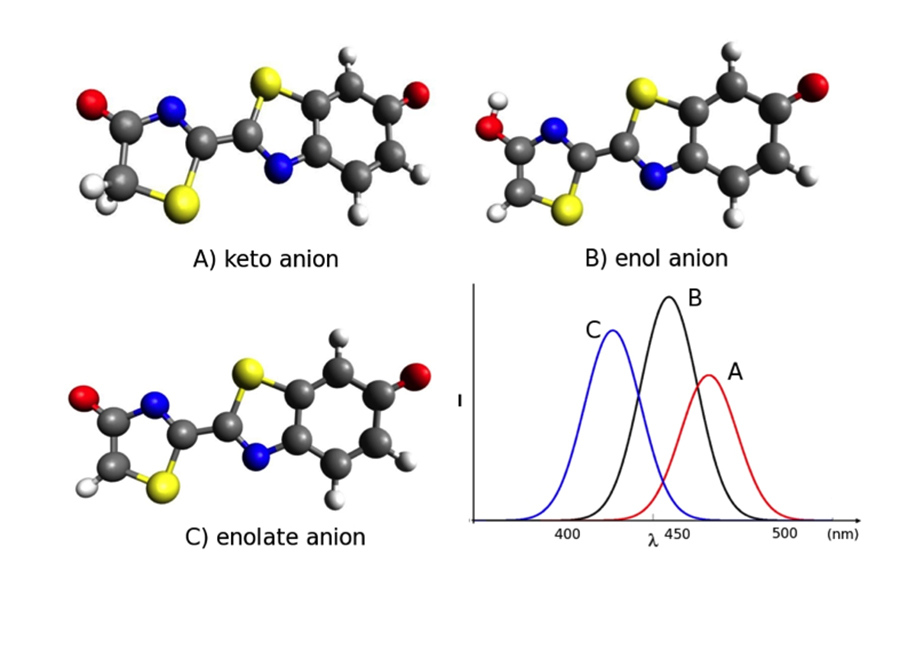MATERIALS SCIENCE AND CHEMISTRY
In Silico Study of the Optical Properties of Oxyluciferins
Principal Investigator:
Leonardo Guidoni
Affiliation:
University of L’Aquila, Trieste (Italy)
Local Project ID:
PRA092
HPC Platform used:
JUQUEEN of JSC
Date published:
Bioluminescence occurs in several living organisms, like fish, insects, algae and bacteria. Animals use bioluminescence for a variety of purposes: emitting light allows them to communicate with each other or is used as self-defense. Light emission in the fireflies is the product of a reaction catalysed by an enzyme named luciferase. The product of this reaction is the oxyluciferin, which in turn emits visible light. The nature of the emitting form of oxyluciferin has been the object of a large debate over the years, producing a certain number of hypotheses; computational and experimental studies investigated the optical properties of different tautomers with several protonation states.
Experimental data are available also on the isolated photoactive molecules in gas such that they can capture the intrinsic optical properties of oxyluciferin, which is important for a quantitative comparison with computational results.
The interplay between the structural and absorption properties of oxyluciferins has been studied by the group of Leonardo Guidoni at the University of L’Aquila (Italy) in collaboration with Daniele Varsano at the S3 Center for nanoscience in Modena (Italy) with an unprecedented level of accuracy. The accurate determination of the ground state geometries of organic chromophores is a fundamental starting point for a quantitative evaluation of their excited state properties.
To this aim the researchers have investigated the electronic structure and geometries of different tautomers and protonation states of oxyluciferins by means of Quantum Monte Carlo methods, a very accurate quantum chemistry technique, specifically suited for massive parallel calculations in High-Performance-Computing facilities like HPC system JUQUEEN of the Jülich Supercomputing Centre. The optical properties have been studied at the level of Many-Body Perturbation Theory, an accurate theoretical machinery to tackle the excited state properties of molecules and solids.
The use of the HPC infrastructure, which was provided by PRACE (Partnership for Advanced Computing in Europe) allowed the scientists to carry out precise calculations for the geometry optimization and the excited-state energies of the three different forms of oxyluciferins, shown in the Figure. The researchers have therefore tackled the description of the absorption spectra of these important biochromophores to understand the role of the specific molecular features on their fine spectral tuning.

Figure 1: The scientists computed at the Quantum Monte Carlo level the optimised geometries of three forms of oxyluciferin (A,B,C), differing by protonation states and tatomers. The computational spectral shift of the forms calculated with Many Body Perturmation Theory are reported in the last panel.
Copyright: University of L’Aquila, L'Aquila (Italy)Scientific Contact:
Leonardo Guidoni
Universita' degli studi dell'Aquila
Dipartimento di Scienze Fisiche e Chimiche
CBBC Group http://bio.phys.uniroma1.it
e-mail: leonardo.guidoniv[at]univaq.it
May 2016